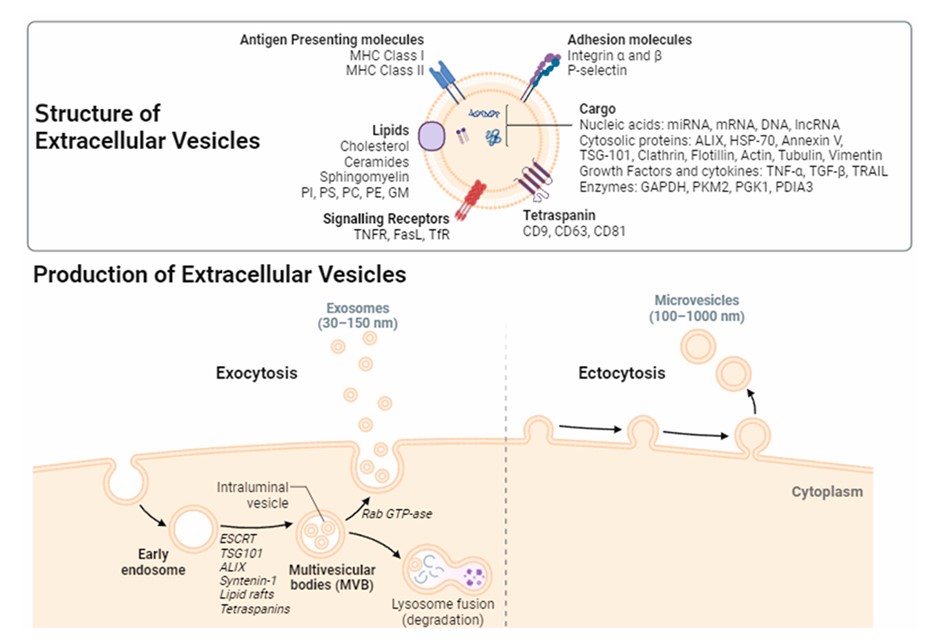Extracellular Vesicle Profiling Services
Overview Services Features FAQs
Creative Biolabs provides EV profiling services to decipher the rich contents of EVs, contributing clues to understanding the molecular mechanisms of EVs.
Overview
The profiling of EVs involves all components of expression abundance and concentration contents, which vary depending on the nature and biogenesis of different subpopulations of EVs. The combination of multi-omics studies helps to understand this complexity. Creative Biolabs facilitates the deciphering of the multiple contents of EVs, allowing an in-depth resolution of the functional mechanisms of EVs-mediated messaging and elucidating the mediating role of EVs on selective intercellular signaling crosstalk, clearance and immunity to extend biomedical research.
 Fig.1 EV Biogenesis.1
Fig.1 EV Biogenesis.1
EVs Profiling Services in Creative Biolabs
The profiling of EVs facilitates insight into the biological mechanisms that mediate material transport, signal transduction, and enable physiological functions in cells, with the potential to identify new diagnostic and prognostic markers of disease. For the extensive EV contents, Creative Biolabs has built multiple EV profiling platforms for providing isolation, qualitative, and quantitative profiling services, including:
Features
-
Comprehensive Analysis: Our service offers thorough characterization of extracellular vesicles, including size distribution, concentration, and cargo analysis.
-
Personalized Solutions: Services catered to particular study requirements, offering alternatives for various sample kinds and analytic techniques.
-
Expert Consultation: Access to experienced scientists for data interpretation and consultation on experimental design.
-
Confidentiality: Carefully follow confidentiality clauses to safeguard your study results.
Since the EV contents reflect the type and state of their parent cells, the EVs profiling is valuable for providing stable and disease-specific biological information with high applications for their functional development and related disease research. Creative Biolabs provides comprehensive EV profiling services to help understand the molecular specificity and potential applications of EVs. Please contact us with your interest.
FAQs
Q: What information can I obtain from extracellular vesicle profiling?
A: Our profiling includes size distribution, concentration, surface marker analysis, and cargo content such as RNA, proteins, and lipids.
Q: Can you assist with data interpretation?
A: Yes, our team of experts provides comprehensive data analysis and interpretation support.
Q: Are the results reliable and reproducible?
A: We ensure high-quality and reproducible results through stringent quality control measures and validated protocols.
Q: Can I request a customized analysis plan?
A: Absolutely, we offer tailored services to meet specific research requirements.
Q: Is my data kept confidential?
A: Yes, we prioritize confidentiality and adhere to strict data protection protocols.
Reference
-
Cabrera-Pastor, Andrea. "Extracellular Vesicles as Mediators of Neuroinflammation in Intercellular and Inter-Organ Crosstalk." International Journal of Molecular Sciences 25.13 (2024): 7041. Under Open Access license CC BY 4.0. The image was modified by revising the title.
For Research Use Only. Cannot be used by patients.
Related Services:

 Fig.1 EV Biogenesis.1
Fig.1 EV Biogenesis.1









